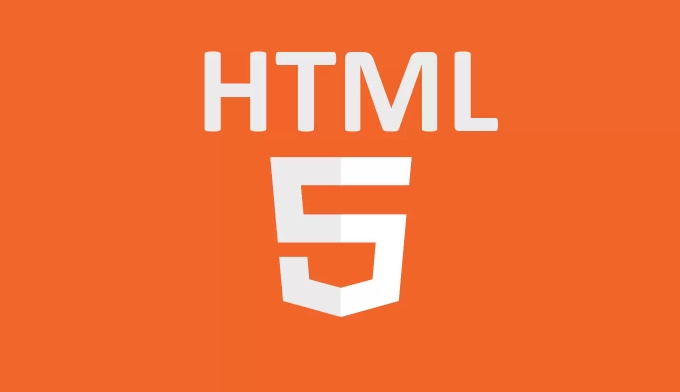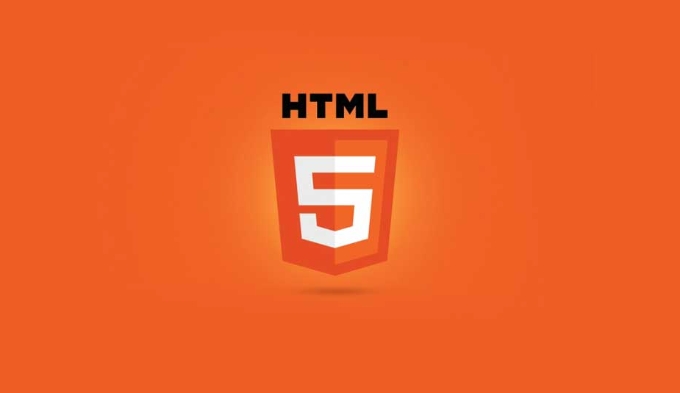Understanding HTML5 Media Source Extensions (MSE)
Jul 08, 2025 am 02:31 AMMSE (Media Source Extensions) is part of the W3C standard, allowing JavaScript to dynamically build media streams, thus enabling advanced video playback capabilities. It manages media sources through MediaSource, stores data from SourceBuffer, and represents the buffering time range through TimeRanges, allowing the browser to dynamically load and decode video clips. The process of using MSE includes: ① Create a MediaSource instance; ② Bind it to the

HTML5 Media Source Extensions (MSE) is one of the key technologies for implementing advanced video playback capabilities in modern web pages, especially in streaming applications. It allows JavaScript to build media streams dynamically, rather than loading the entire file directly from the URL. This is crucial for implementing adaptive bit rate, dynamic ad insertion and other functions.

What is MSE?
MSE (Media Source Extensions) is a standard extension of W3C that provides HTML5's <video></video> and <audio></audio> elements with the ability to control media data through JavaScript. Simply put, you can splice video clips by yourself instead of relying entirely on the browser to load the entire video file.
This is the most common scenario in actual use, platforms like YouTube or Netflix, which require dynamically switching video quality based on the user's network conditions. At this time, the traditional single video file loading method is not enough.

Basic workflow of MSE
To use MSE, you need to understand several core objects:
-
MediaSource: Manage the source of media streams -
SourceBuffer: Used to store media data you added -
TimeRanges: represents the time range in the current buffer
The general process is as follows:

- Create a
MediaSourceinstance - Bind it to
srcof the<video></video>element - Add one or more
SourceBufferto receive data in a specific format (such as video/mp4; codecs="avc1.42E01E, mp4a.40.2") - Get segmented media data through
fetch()orXMLHttpRequestand append it toSourceBuffer - The browser automatically handles decoding and playback
This process does not seem complicated, but many details need to be paid attention to in actual operation, such as whether the data format matches, whether the timestamps are aligned, etc.
Frequently Asked Questions and Precautions
While MSE provides powerful features, there are some error-prone areas:
Format compatibility : Not all browsers support the same encoding format. For example, some browsers may only support WebM and not MP4, or have limited support for H.264.
Timestamp alignment : If you manually splice video clips, the timestamps must be continuous and without overlap, otherwise there will be stuttering or black screen.
Memory management : Long-running applications should pay attention to cleaning buffers that are no longer needed to avoid consuming too much memory.
Cross-domain issue : If you get media data from another domain name, make sure the server has the correct CORS header set.
In addition, you can listen to the error event during debugging to discover the problem of SourceBuffer, and you can also use the browser developer tool to view the time range of the current buffer.
How to start trying MSE?
If you want to try MSE hands-on, you can start with a simple example:
- Prepare a
.mp4shard file (can be cut with FFmpeg) - Build a local server to provide these files
- Create MediaSource with JavaScript and append it to
<video></video>tag - Read and add data segment by segment to SourceBuffer
There are many sample codes available for reference on the Internet, and there are detailed API documentation on MDN. The key is to understand the process first, and then gradually try different functions.
Basically that's it. After mastering the basic principles and common problems of MSE, you can further explore the implementation mechanism of streaming protocols such as HLS or DASH.
The above is the detailed content of Understanding HTML5 Media Source Extensions (MSE). For more information, please follow other related articles on the PHP Chinese website!

Hot AI Tools

Undress AI Tool
Undress images for free

Undresser.AI Undress
AI-powered app for creating realistic nude photos

AI Clothes Remover
Online AI tool for removing clothes from photos.

Clothoff.io
AI clothes remover

Video Face Swap
Swap faces in any video effortlessly with our completely free AI face swap tool!

Hot Article

Hot Tools

Notepad++7.3.1
Easy-to-use and free code editor

SublimeText3 Chinese version
Chinese version, very easy to use

Zend Studio 13.0.1
Powerful PHP integrated development environment

Dreamweaver CS6
Visual web development tools

SublimeText3 Mac version
God-level code editing software (SublimeText3)

Hot Topics
 Handling reconnections and errors with HTML5 Server-Sent Events.
Jul 03, 2025 am 02:28 AM
Handling reconnections and errors with HTML5 Server-Sent Events.
Jul 03, 2025 am 02:28 AM
When using HTML5SSE, the methods to deal with reconnection and errors include: 1. Understand the default reconnection mechanism. EventSource retrys 3 seconds after the connection is interrupted by default. You can customize the interval through the retry field; 2. Listen to the error event to deal with connection failure or parsing errors, distinguish error types and execute corresponding logic, such as network problems relying on automatic reconnection, server errors manually delay reconnection, and authentication failure refresh token; 3. Actively control the reconnection logic, such as manually closing and rebuilding the connection, setting the maximum number of retry times, combining navigator.onLine to judge network status to optimize the retry strategy. These measures can improve application stability and user experience.
 Integrating CSS and JavaScript effectively with HTML5 structure.
Jul 12, 2025 am 03:01 AM
Integrating CSS and JavaScript effectively with HTML5 structure.
Jul 12, 2025 am 03:01 AM
HTML5, CSS and JavaScript should be efficiently combined with semantic tags, reasonable loading order and decoupling design. 1. Use HTML5 semantic tags, such as improving structural clarity and maintainability, which is conducive to SEO and barrier-free access; 2. CSS should be placed in, use external files and split by module to avoid inline styles and delayed loading problems; 3. JavaScript is recommended to be introduced in front, and use defer or async to load asynchronously to avoid blocking rendering; 4. Reduce strong dependence between the three, drive behavior through data-* attributes and class name control status, and improve collaboration efficiency through unified naming specifications. These methods can effectively optimize page performance and collaborate with teams.
 How to control HTML5 video and audio playback using JavaScript?
Jun 24, 2025 am 12:38 AM
How to control HTML5 video and audio playback using JavaScript?
Jun 24, 2025 am 12:38 AM
To control HTML5 video and audio playback using JavaScript, master the following key operations to achieve basic control. 1. Start or pause play can be achieved through the .play() and .pause() methods, and it is recommended to trigger through user interaction to be compatible with mobile browsers; 2. Control the volume and set the value from 0 to 1 through the volume attribute, and switch by setting the muted attribute to true or false; 3. Jump to a specific time to play, you can use the currentTime attribute, which supports direct assignment or increase or decrease the current time, and it is recommended to add error handling; 4. Listen to the playback status changes can be achieved through events such as play, pause, ended and timeupdate.
 Receiving real-time data with HTML5 Server-Sent Events (SSE).
Jul 02, 2025 pm 04:46 PM
Receiving real-time data with HTML5 Server-Sent Events (SSE).
Jul 02, 2025 pm 04:46 PM
Server-SentEvents (SSE) is a lightweight solution provided by HTML5 to push real-time updates to the browser. It realizes one-way communication through long HTTP connections, which is suitable for stock market, notifications and other scenarios. Create EventSource instance and listen for messages when using: consteventSource=newEventSource('/stream'); eventSource.onmessage=function(event){console.log('Received message:',event.data);}; The server needs to set Content-Type to text/event
 Declaring the correct HTML5 doctype for modern pages.
Jul 03, 2025 am 02:35 AM
Declaring the correct HTML5 doctype for modern pages.
Jul 03, 2025 am 02:35 AM
Doctype is a statement that tells the browser which HTML standard to use to parse the page. Modern web pages only need to be written at the beginning of the HTML file. Its function is to ensure that the browser renders the page in standard mode rather than weird mode, and must be located on the first line, with no spaces or comments in front of it; there is only one correct way to write it, and it is not recommended to use old versions or other variants; other such as charset, viewport, etc. should be placed in part.
 What are the best practices for structuring an HTML5 document?
Jun 26, 2025 am 01:03 AM
What are the best practices for structuring an HTML5 document?
Jun 26, 2025 am 01:03 AM
To build standardized and clear HTML5 documents, the following best practices must be followed: 1. Use standard document type declarations; 2. Build a basic skeleton including three tags and pay attention to the character set, title and script location; 3. Use semantic tags such as , , to improve accessibility and SEO; 4. Reasonably nest the title levels to ensure that the structure is clear and there is only one per page. These steps help improve code quality, collaboration efficiency and user experience.
 Explaining the HTML5 `` vs `` elements.
Jul 12, 2025 am 03:09 AM
Explaining the HTML5 `` vs `` elements.
Jul 12, 2025 am 03:09 AM
It is a block-level element, suitable for layout; it is an inline element, suitable for wrapping text content. 1. Exclusively occupy a line, width, height and margins can be set, which are often used in structural layout; 2. No line breaks, the size is determined by the content, and is suitable for local text styles or dynamic operations; 3. When choosing, it should be judged based on whether the content needs independent space; 4. It cannot be nested and is not suitable for layout; 5. Priority is given to the use of semantic labels to improve structural clarity and accessibility.
 Improving SEO with HTML5 semantic markup and Microdata.
Jul 03, 2025 am 01:16 AM
Improving SEO with HTML5 semantic markup and Microdata.
Jul 03, 2025 am 01:16 AM
Using HTML5 semantic tags and Microdata can improve SEO because it helps search engines better understand page structure and content meaning. 1. Use HTML5 semantic tags such as,,,, and to clarify the function of page blocks, which helps search engines establish a more accurate page model; 2. Add Microdata structured data to mark specific content, such as article author, release date, product price, etc., so that search engines can identify information types and use them for display of rich media summary; 3. Pay attention to the correct use of tags to avoid confusion, avoid duplicate tags, test the effectiveness of structured data, regularly update to adapt to changes in schema.org, and combine with other SEO means to optimize for long-term.






